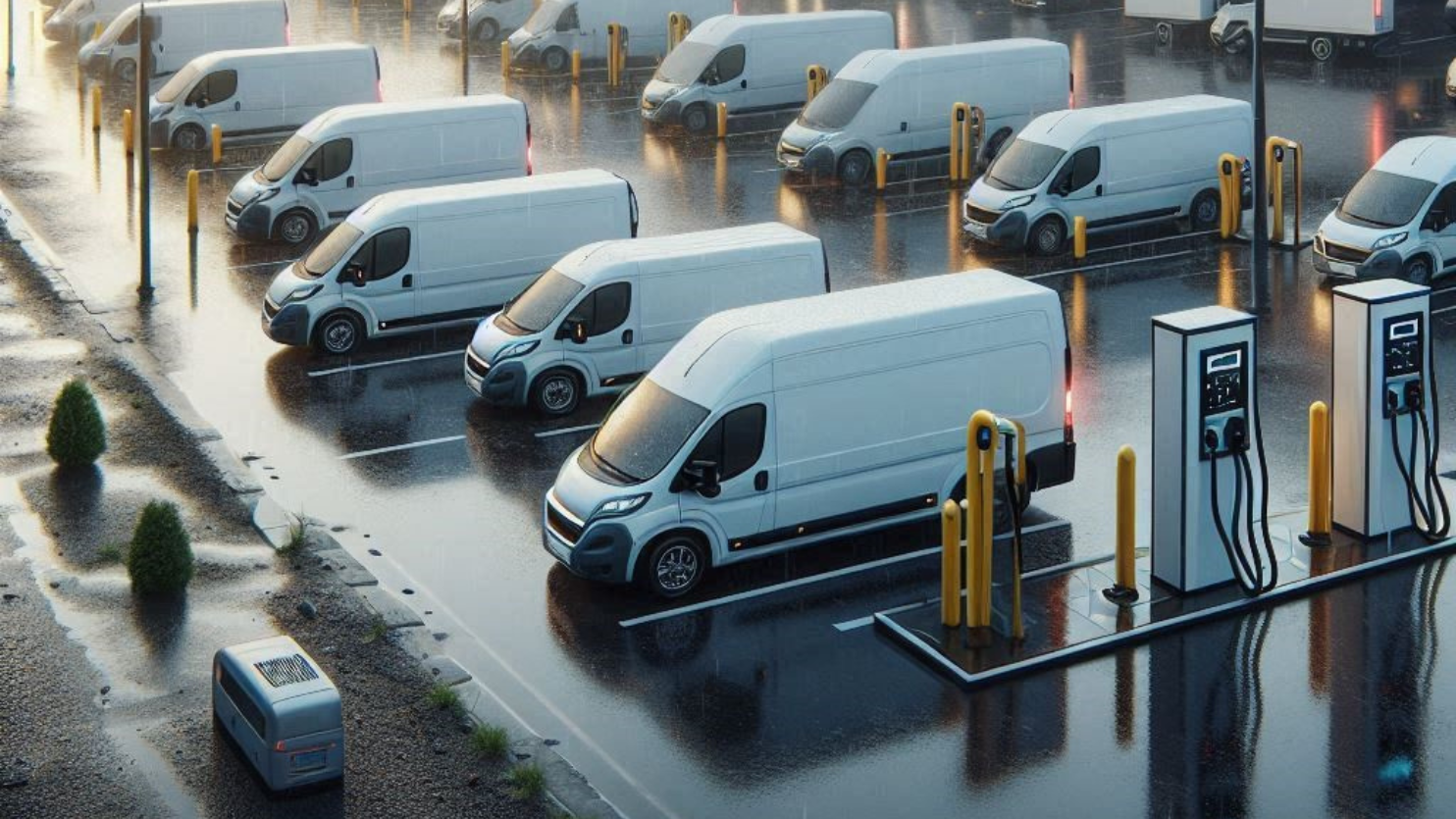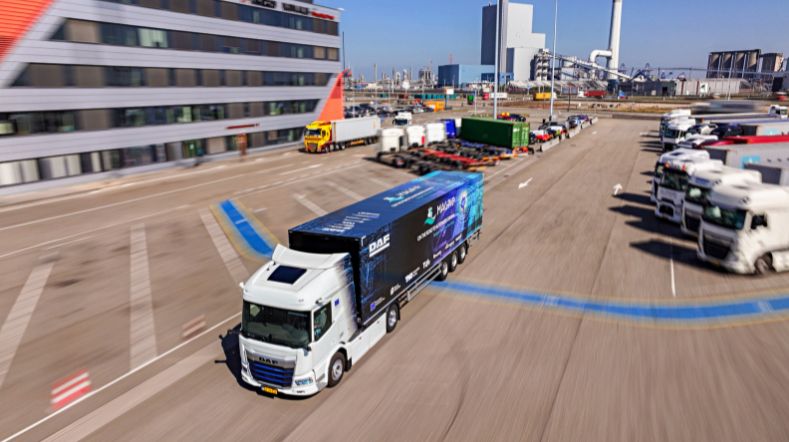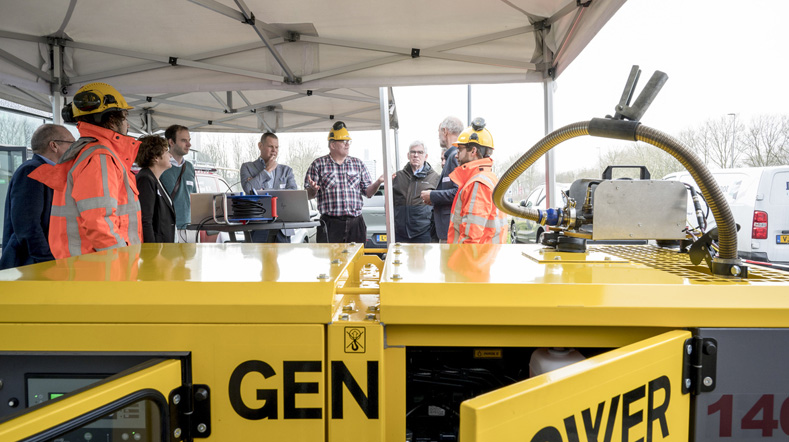
Optimal charging planning for logistics service providers considering grid congestion
With TNO’s Charge Planning Tool, carriers and shippers can create an optimal logistics planning that takes into account the charging cycle of electric vehicles. Algorithms powered by real-life data help entrepreneurs make the most of their current energy connection and charging capabilities. They also provide insights into investment decisions. Thus, the tool directly contributes to advancing the energy transition and achieving climate goals in logistics.
Emission legislation
To meet the climate goals of the Paris Agreement and the European Green Deal, the transport and logistics sectors must become more sustainable in the short term to be fully CO₂-neutral by 2050. Carriers and shippers must also comply with Euro Emission legislation aimed at improving air quality. In addition to the upcoming Euro7 standard, more and more cities are establishing zero-emission zones, driving the energy transition.
However, in logistics, this engine threatens to stall, explains Jan-Willem Sangers, Business Developer Sustainable Vehicles at TNO. 'In this transition to clean vehicles, electric transport with battery-electric vehicles is crucial, however scaling-up is often hampered by grid congestion issues, because larger grid connections are unavailable. With a limited connection, vehicles cannot charge all simultaneously. Shippers and carriers must therefore calculate charging time into their logistics planning which must be robust above all. A complex challenge for which there was no solution in existing planning software until now.'
Breaking the bottleneck
The Charge Planning Tool can help break a upcoming bottleneck in the energy transition. The tool, developed by TNO together with partners within the Recovery Fund project Green Transport Delta, takes logistics planning as a starting point and then determines an optimal charging plan for all electric vehicles, using advanced algorithms.
'For logistics companies, it is essential that all trips can be made without delay or unexpected stops due to an empty battery,' explains Sangers. 'This tool takes the grid-connection into account and optimises for feasibility and robustness of the logistics planning. Additionally, the tool optimises – within safe reliability margins – for Total Cost of Ownership (TCO), considering energy prices, maintenance costs, and battery life. This can yield significant savings, especially for larger fleets.'

'This tool takes the grid-connection into account and optimises for feasibility and robustness of the logistics planning.'
Optimal operation
According to Róbinson Medina Sánchez, Scientist Integrator Powertrains at TNO, the tool will help companies achieve optimal operation with electric vehicles. 'Current fleet planning tools provide a logistics plan indicating which goods should go to which destination at what time. This works fine for diesel vehicles, but for electric vehicles, a charging schedule is added. The tool calculates not only which vehicle should be connected to which charging station at what time but also considers dynamic factors such as battery consumption during trips and any delays in the schedule.'
To estimate energy consumption as accurately as possible, actual measured energy consumption and information about the driven route are available as input for a digital twin of the vehicle. Medina Sánchez: 'This allows us to accurately predict when the vehicle will arrive and what the charge level will be upon arrival. This is a live interaction with the vehicle, and this is done for each vehicle in the fleet'. All this information together serves as input for the Charge Planning Tool to determine an optimal and robust charging plan.

'Current fleet planning tools provide a logistics plan indicating which goods should go to which destination at what time. This works fine for diesel vehicles, but for electric vehicles, a charging schedule is added.'
Early in the market
Róbinson Medina Sánchez sees a lot of interest from the logistics sector. 'We are ahead of the curve with this solution: as of yet there are no commercial parties offering something similar. This tool can generate a charging plan for hundreds of vehicles over multiple chargers within minutes. The algorithm is flexible and can handle unexpected situations such as delays, extra energy consumption, or trips. Current commercial software does not yet offer the necessary integration for electric transport. Therefore, we are working with these parties to integrate our algorithm and knowledge into their tools to create a commercial product. In the short term, we can already support carriers with their daily charging planning.'
Jan-Willem Sangers adds: 'Incidentally, this problem is not only relevant in logistics but also on construction sites with electric construction equipment, tour boats in Amsterdam, leisure ships, and large-scale electrification in ports and airports. It started in logistics, but the application possibilities are very diverse.'
Tool provides confidence
Companies can use the Charge Planning Tool to optimize their operations, but it also helps them make strategic decisions about expanding their charging capacity, explains Róbinson Medina Sánchez. 'With this tool, it becomes possible, for example, to determine how many electric vehicles can still be added to a particular logistics plan to ensure a robust plan with the current connection. But also: how can I make optimal use of an industrial battery at my distribution center? Or: what is the effect on my charging plan and costs if I invest in additional chargers?'
'It provides companies with insights and certainty in future investments,” adds Sangers. “We see this as an instrumental part of advancing the energy transition, breaking the upcoming bottleneck due to grid congestion. At the same time, I see opportunities for the future to use our knowledge and algorithms for other purposes, for example, when costs become more important than emission goals again.'

Making an impact on the energy transition
TNO’s ultimate goal is not to bring the tool to market as a commercial product independently but to make the underlying knowledge and algorithms as widely available as possible. This can be done in various ways, explains Róbinson Medina Sánchez: 'Firstly, we want to give carriers and shippers access to the tool with a license to experience using it. These can also be partners who want to further develop the tool together with us by expanding the problem domain. Think of adding an industrial battery. Additionally, we want to develop a web interface to give entrepreneurs an overview of the possibilities. Entrepreneurs with smaller fleets might be able to create a charging plan directly through this interface.
Finally, we want to offer the algorithms and our knowledge to parties developing logistics planning software. Through these software partners, we can reach a large part of the logistics sector in a short time, allowing us to make a real impact on the energy transition.'
Get inspired
Demonstrations of automated driving and charging for logistics at Maasvlakte


Cleaner construction thanks to smart construction logistics and accurate emission measurements


Sustainable logistics



